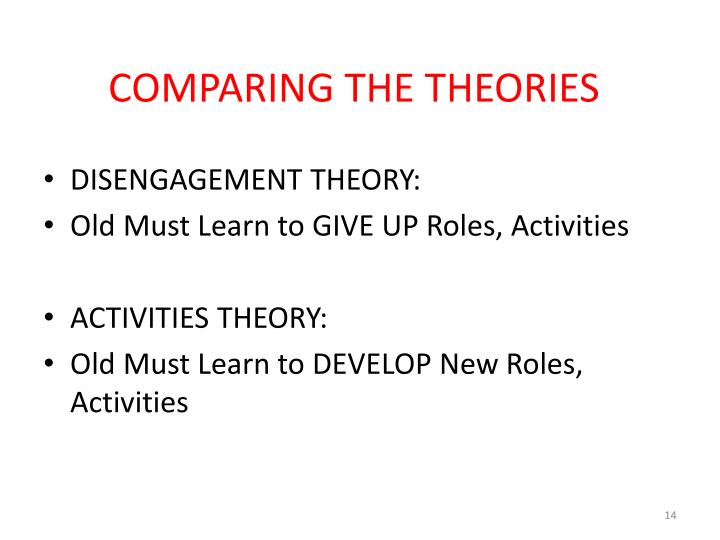

Simply put, older people grow and change, but their adaptation to new circumstances is linked to their past experiences and long-held values, He perceived continuity in aging as a dynamic and developmental process. In his book, Continuity and Adaptation in Aging: Creating Positive Experiences, Atchley further developed and bolstered his theory. In his article tilted A Continuity Theory of Normal Aging, he understood the process of aging as shaped by one’s personal history, values, and social interactions. Robert Atchley is considered the “father” of continuity theory. He used the concept of continuity to explain the behavior of aging individuals. George Maddox observed that older people engaged in similar activities to those of their previous life.

Here’s a timeline of the development of the theory 1968 Further, based on subsequent research, others asserted that the theory of disengagement fails to capture the complex and rich social lives of the elderly, and the many forms of engagement that follow retirement (see "The Social Connectedness of Older Adults: A National Profile" by Cornwall et al., published in American Sociological Review in 2008).References Origins of Continuity Theory of Aging Evoking a fundamental conflict within sociology between functionalist and other theoretical perspectives, some pointed out that the theory completely ignores the role of class in shaping the experience of aging, while others critiqued the assumption that the elderly have seemingly no agency in this process, but rather are compliant tools of the social system. Some critics pointed out that this was a flawed social science theory because Cummings and Henry assume that the process is natural, innate, and inevitable, as well as universal. The theory of disengagement caused controversy as soon as it was published. Disengagement occurs across all cultures but is shaped by the culture in which it occurs.Once disengaged, remaining relationships shift, rewards of them may change, and hierarchies may also shift.A person is ready to disengage when they are aware of the short time remaining in their life and they no longer wish to fulfill their current social roles and society allows for disengagement in order to provide jobs for those coming of age, to satisfy the social needs of a nuclear family, and because people die.People who have disengaged adopt new social roles so as not to suffer a crisis of identity or become demoralized.A disjunction between the two will occur when one is ready but not the other.

Complete disengagement happens when both the individual and society are ready for this to occur.Simultaneously younger adults are trained to develop the knowledge and skills necessary to take over the roles played by those who disengage. The process of disengaging is spurred by an individual's desire to not have their reputation damaged by losing skills and abilities while they are still fully engaged in their social roles.The disengagement process for men and women differs due to their different social roles.

Losing touch with norms reinforces and fuels the process of disengagement. As a person begins to disengage, they are increasingly freed from social norms which guide interaction.People lose social ties to those around them because they expect death, and their abilities to engage with others deteriorate over time.


 0 kommentar(er)
0 kommentar(er)
